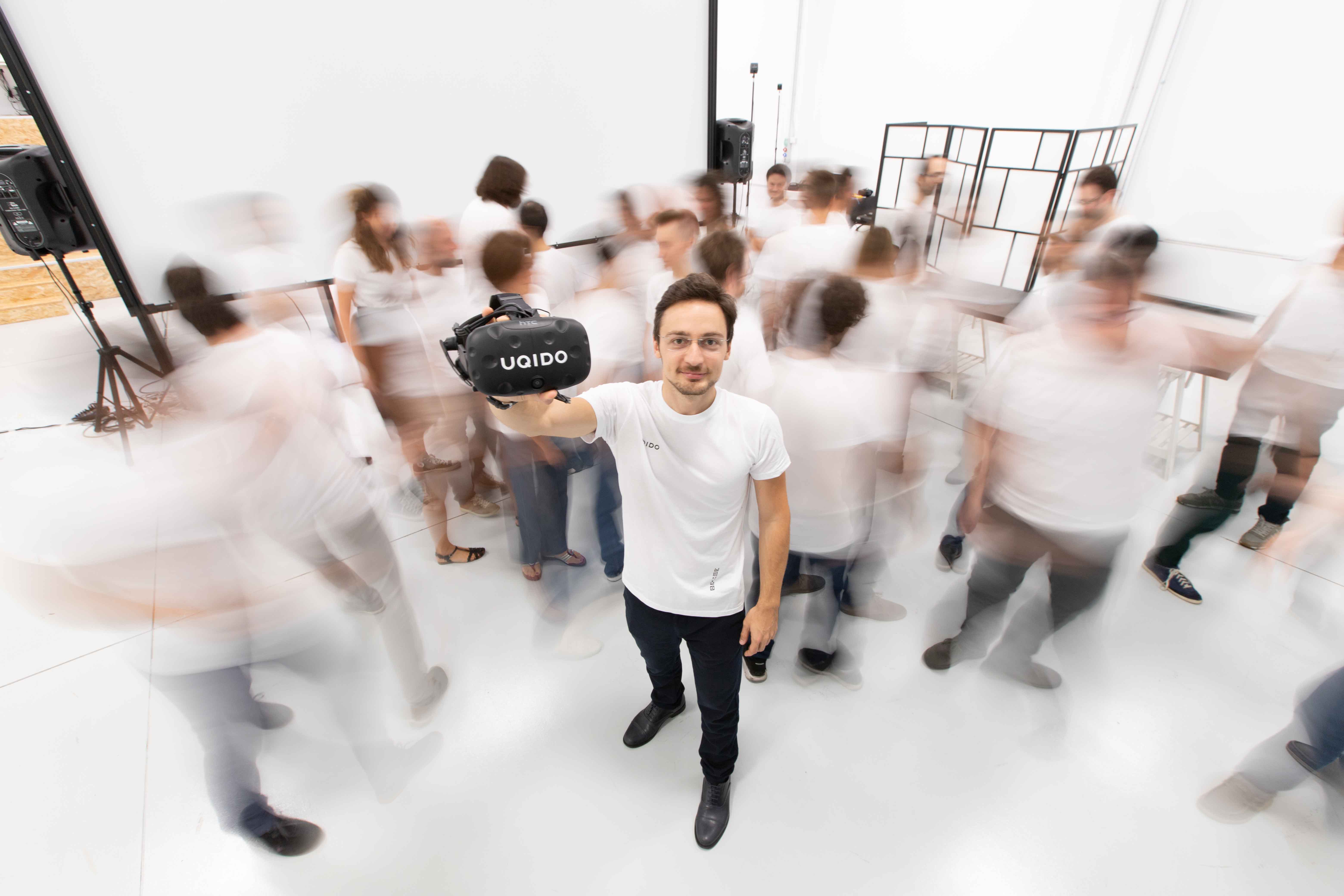La possibilità di osservare oggetti in realtà aumentata aumenta del vendite online anche del 20%.
Asset digitali 3D per aumentare le vendite online
Il 2020 spartiacque del commercio online
Il 2020 verrà ricordato, oltre che per il Covid-19, per i tassi di crescita del commercio online che hanno toccato vette anche del 44%. Ma le aziende sono pronte a questo cambio di paradigma? Cosa cercano i consumatori e qual è il processo di acquisto sul web?
Abbiamo studiato il fenomeno e condotto delle ricerche per capire quali siano motivazioni o freni all’acquisto dei consumatori andando così ad immaginare delle soluzioni utili alle aziende per aumentare le vendite online, come, ad esempio, asset digitali 3D.
Analisi di mercato e generazione di idee
Il nostro team di stategist ha condotto indagini di mercato per capire quali fossero i freni all’acquisto sugli e-commerce e una buona percentuale degli intervistati ammette di non fidarsi delle immagini 2D dei prodotti che vengono riportate sui siti web. Infatti, soprattutto nel caso di beni alto di gamma, poter visualizzare i prodotti in tutte le loro parti, nei dettagli e nella diverse varianti è determinante per l’acquisto.
E’ quindi fondamentale utilizzare nelle piattaforme web oggetti 3D del tutto equiparabili alle loro controparti reali che, nella migliore delle situazioni, possano anche essere fruiti attraverso la realtà aumentata.
E le aziende cosa ne pensano?
Il business nel 2020 ha visto crollare molte delle proprie certezze: quante aziende erano abituate a promuovere i propri prodotti a fiere ed eventi fisici e si sono trovate impossibilitate a farlo? Quante volte il processo di vendita constava nell’inviare un sales manager dall’altra parte del mondo ad illustrare in prima persona un determinato prodotto (come nel caso di Safilo)?
Il Covid-19 ha reso impossibile tutto ciò per un periodo non trascurabile di tempo in cui le aziende dovevano comunque continuare a vendere.
Anche in questo caso prodotti 3D esplorabili in ogni loro dettaglio, cataloghi in realtà aumentata, modelli frutto di scansioni tramite fotogrammetria si sono rivelati asset non solo preziosi ma anche decisivi per la sopravvivenza delle aziende.
La soluzione: Prodotti 3D AR-Ready
Grazie al nostro team XR abbiamo ingegnerizzato il processo di creazione di modelli 3D per dar modo alle aziende di avere online prodotti equivalenti a quelli reali in un lasso di tempo ragionevolmente breve. Tutto ciò ha sostenuto le vendite in un periodo di forte incertezza e ha abbattuto barriere all’acquisto tipiche di quella gran parte di utenti ancora diffidenti nei confronti del commercio elettronico.
Per ottenere una resa fotorealistica dei modelli 3D vengono usate tecniche come la fotogrammetria o il 3D modelling, ciò consente di ottenere prodotti dettagliati e, allo stesso tempo, fruibili attraverso la realtà aumentata.
Qui alcune demo di prodotti che abbiamo realizzato che, come si evince, spaziano dall’industria del fashion a quella del real estate, passando per complementi di arredo e device tecnologici, asset digitali 3D per aumentare le vendite online-> https://uqido.github.io/product-virtualization-cdn/
Il Team XR e la realtà aumentata
E’ pane per i loro denti! La sfida in questo progetto è stata ottenere modelli equiparabili a quelli realistici ma sufficientemente ‘leggeri’ per essere fruiti in realtà aumentata (che si base su rendering real-time) e su qualsiasi tipo di device, anche su quelli più datati.
Per il design particolare attenzione alla UI
Buona parte degli acquirenti online ha poca dimestichezza con la realtà aumentata perciò era fondamentale attraverso interfacce semplici e intuitive quidarla nella fruizione dei modelli 3D. Tanto più una tecnologia è ben progettata tanto più è facile il suo utilizzo da parte delle persone.
Il marketing a caccia del giusto target
Una grande varietà di aziende ha dovuto fare i conti con la pandemia, la cancellazione di fiere o la chiusura di negozi ma da quali cominciare per validare la nostra idea e delinearne la direzione commerciale? Il team ha sondato il mercato attraverso interviste, statistiche e passando in rassegna un gran numero di fonti di informazioni. Il risultato?
Ti interessano gli insight di questi progetti? Li condividiamo con gli iscritti al nostro Exploratorium, scopri di più su questo laboratorio di sperimentazione cliccando qui 👉 https://exploratorium.uqido.com/
COS’E’ EXPLORATORIUM
Exploratorium è il laboratorio di Uqido dove ogni settimana progettiamo, sviluppiamo e lanciamo sul mercato un nuovo prodotto digitale.
Il nostro MVP Lab composto da sviluppatori, designer e marketing strategist, provenienti da realtà come IDEO, YCombinator, Sony e M31, realizza e lancia ogni settimana un nuovo prototipo e, attraverso tecniche di Growth Hacking, metodologie Lean e Design Sprint, raccoglie i feedback del mercato.



